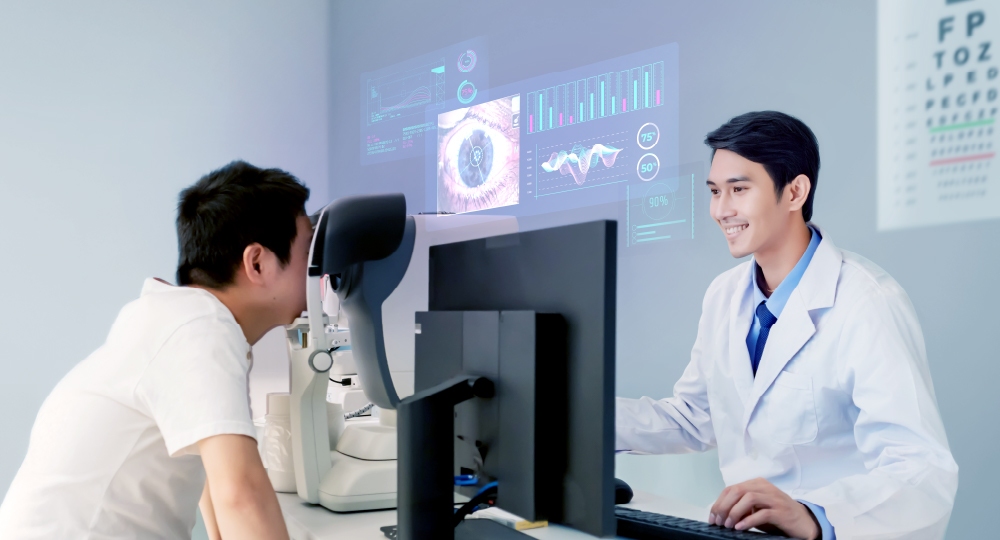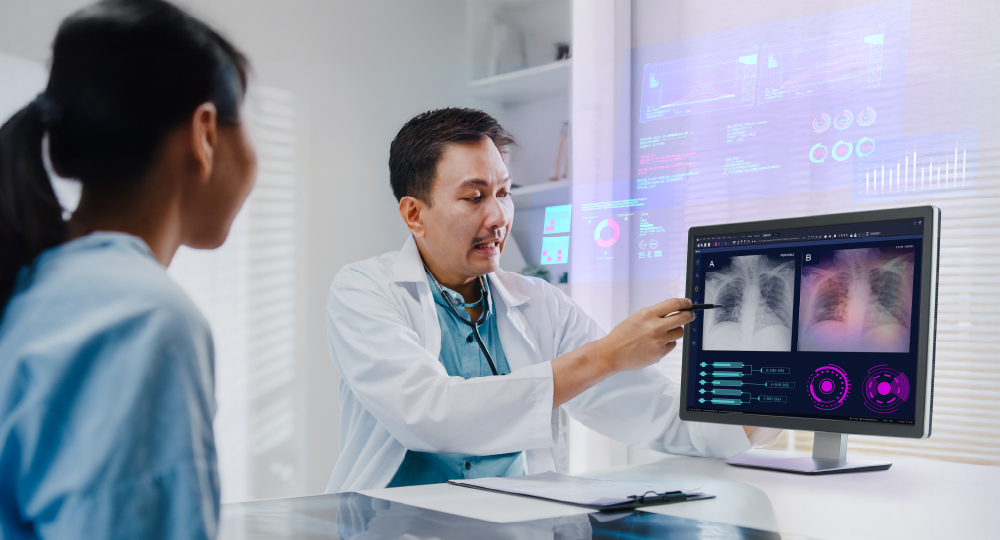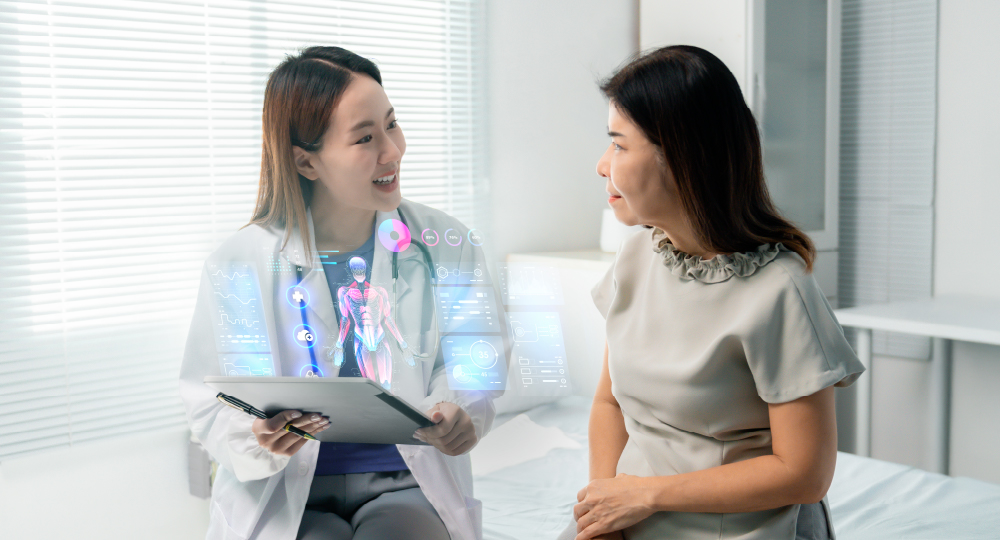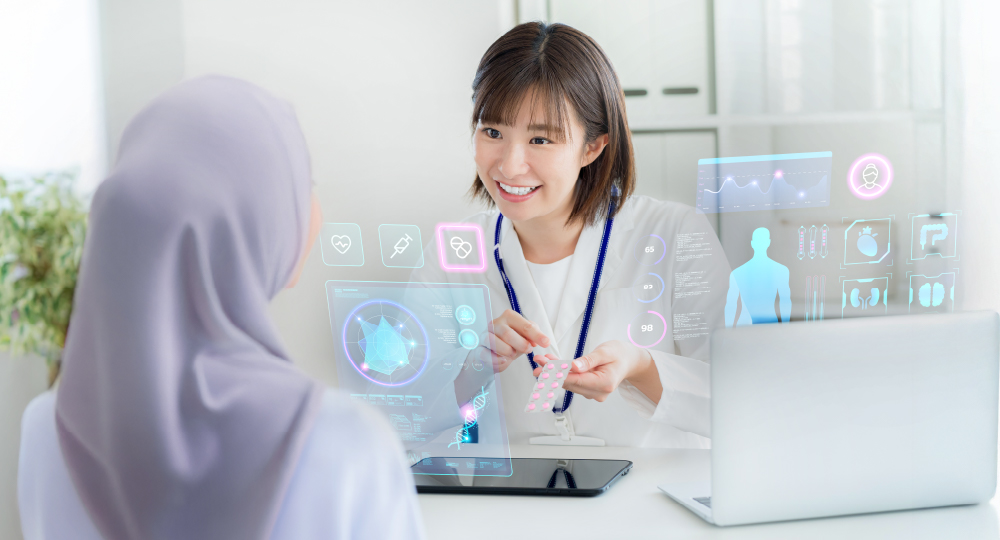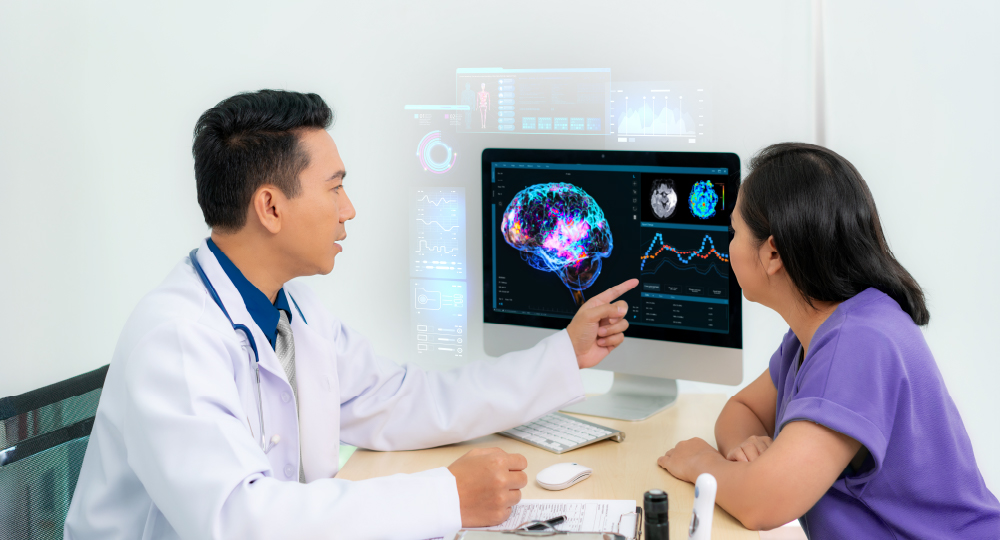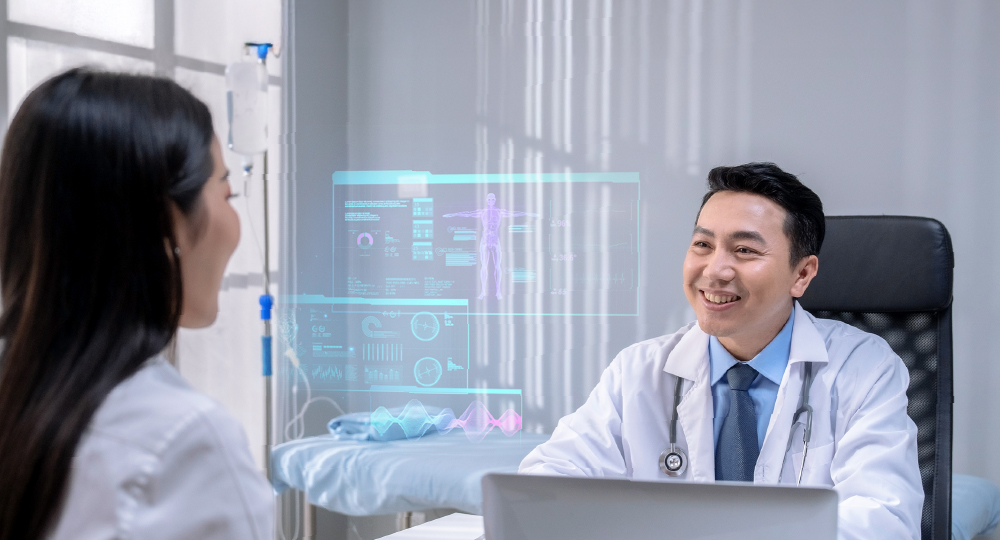At Synapxe, we aim to leverage artificial intelligence (AI) and machine learning to improve healthcare outcomes. With advanced algorithms and data analytics, we can better predict adverse health events and provide innovative solutions for patient care.
AI puts you in control of your own health
AI can use predictive analytics to identify those at risk
AI can better monitor and detect diseases at an early stage
Our Projects
Transforming health through AI
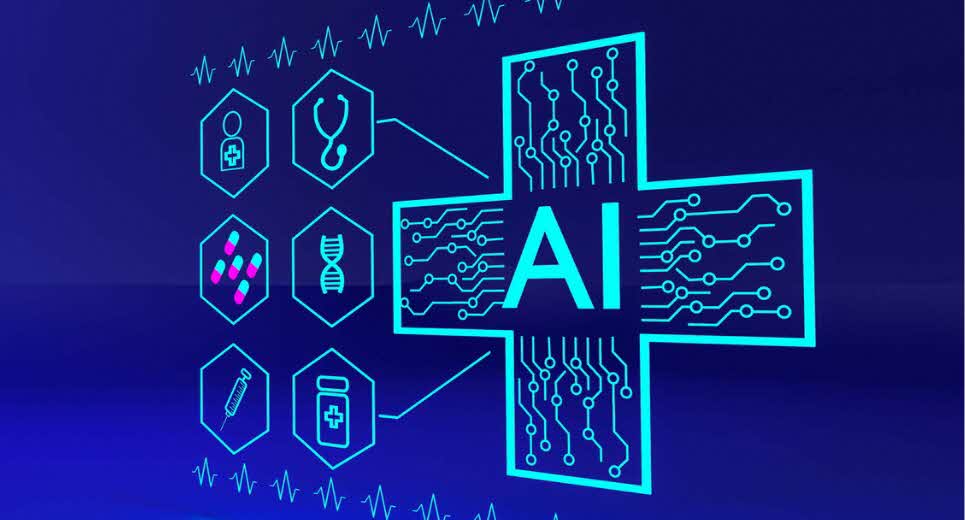
2030 Vision
Artificial Intelligence (AI) supports patients and their primary care teams to consistently achieve better control of diabetes, hypertension and high blood cholesterol, and reduce the risk of developing disease complications.
